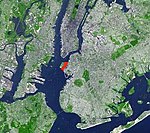Segal Lock and Hardware Company
The Segal Lock and Hardware Company of Manhattan, New York, was a leading manufacturer of hardware merchandise and razor blades in the 1920s and 1930s. Established in Connecticut and Manhattan, the firm relocated to Brooklyn, New York, in the mid-1920s. The Segal Safety Razor Corporation was a subsidiary of the Segal Lock and Hardware Company. The business was at first known as the Burglar-Proof Lock Company.Segal was started by Samuel Segal, formerly a New York City detective in 1912, through his invention of a nearly burglar-proof lock. The vertical deadbolt lock eliminated a horizontal bolt, concentrating on the hinge principle. Segal had noticed that burglars forced locks but never hinges. The firm's beginning was aided by a few more policeman. The original capital was approximately $1,000. Segal and his associates refused $1,000,000 in cash for their fifty separate lock patents. Shortly before her death Mrs. May Stevenson Segal, wife of Samuel Segal, invented a burglar-proof lock, which was marketed to a leading lock manufacturer.
Excerpt from the Wikipedia article Segal Lock and Hardware Company (License: CC BY-SA 3.0, Authors).Segal Lock and Hardware Company
Sullivan Street, New York Brooklyn
Geographical coordinates (GPS) Address Nearby Places Show on map
Geographical coordinates (GPS)
| Latitude | Longitude |
|---|---|
| N 40.679777777778 ° | E -74.015805555556 ° |
Address
Sullivan Street
Sullivan Street
11231 New York, Brooklyn
New York, United States
Open on Google Maps









